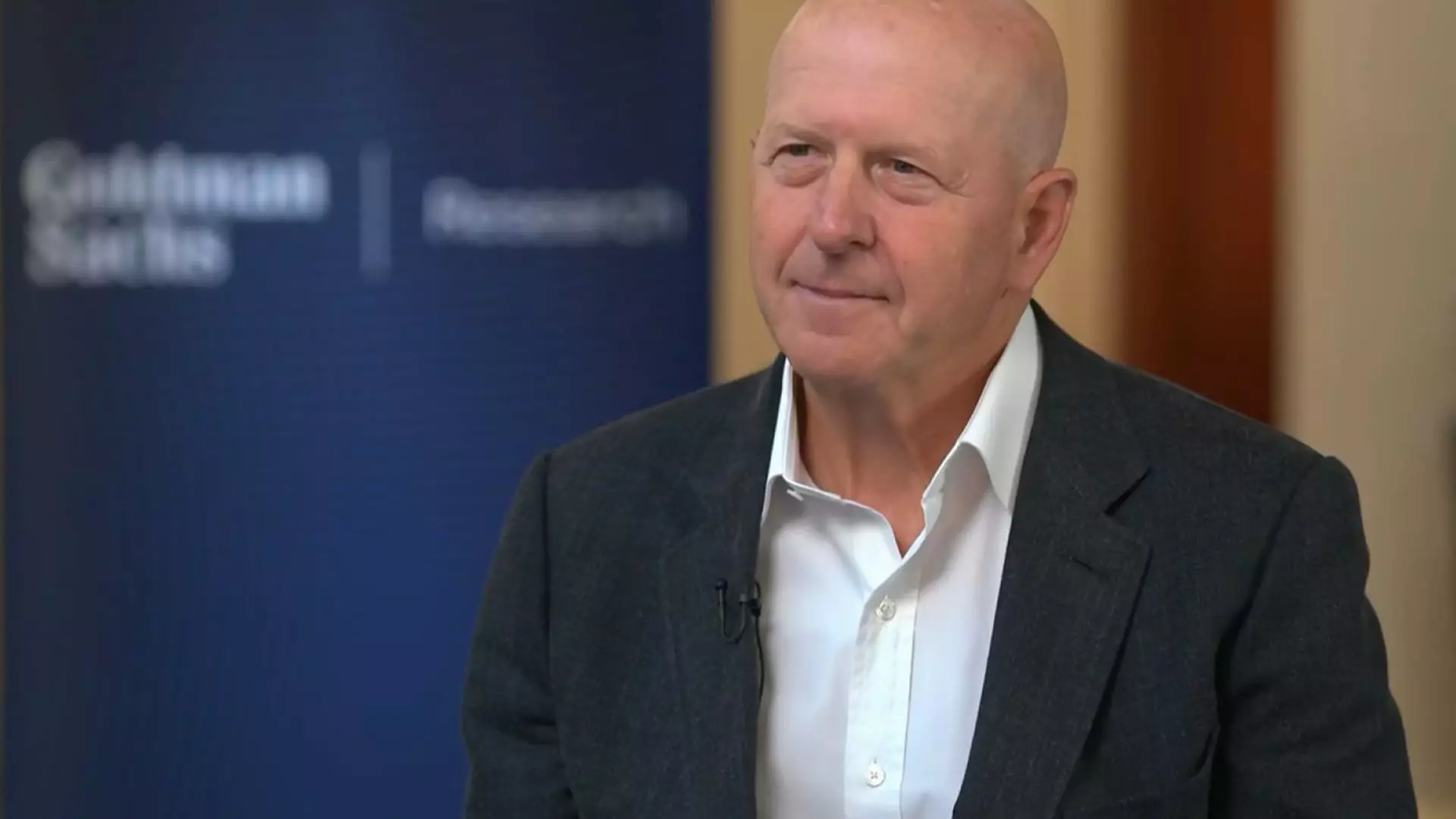Goldman Sachs has recently reported ratings that exceeded predictions, yet this apparent success teeters on a precarious edge. With earnings per share landing at $14.12 against the forecasted $12.35, the investment bank observed a profit increase of 15%, climbing to $4.74 billion. Revenue also improved by 6% to $15.06 billion, edging past estimates. On the surface, these numbers may seem like a vindication of the firm’s strategies, but the reality is much murkier.
The heart of Goldman’s performance lies in its global banking and markets division, where revenue surged by 10% to $10.71 billion largely thanks to a staggering 27% increase in equities trading revenue. This figure, totaling $4.19 billion, far exceeded analyst expectations by approximately $540 million. However, this blossoming area of revenue raises questions. Is this growth sustainable, or merely a short-lived blip induced by recent market volatility?
Trading Gains: A Double-Edged Sword
The spike in trading revenue paints an oddly optimistic picture, especially when one considers its backdrop. The current economic climate, charged with unpredictability due to escalating trade tensions under the Trump administration, has sent ripples throughout the global marketplace. While Goldman seemingly benefits in the short term, this reliance on trading revenue is akin to building a house of cards; one gust of adverse news could bring it all tumbling down.
Contrasting this victory in equities trading, Goldman’s fixed-income division turned in a tepid performance, with revenue merely inching up by 2%, falling short of expectations. This divergence is telling. Greater reliance on equities trading signifies a volatile approach that may not yield long-term stability. The drop in investment banking fees, down 8% to $1.91 billion, is even more disconcerting. The decline hints at a floundering advisory service, suggesting a broader malaise within the bank as clients hesitate to engage amid an uncertain economic landscape.
Asset and Wealth Management: A Shrinking Fortress
The asset and wealth management division adds yet another layer of complexity to Goldman’s financial narrative. Revenue fell by 3% to $3.68 billion, narrowly missing projections. The drop in returns from private equity, public stock, and debt paints a darker picture. If the growth seen in the trading division raises eyebrows about sustainability, this decrease signifies a deeper malaise. After all, how can a bank claim to be a leader in management when its wealth generation capabilities are faltering?
These challenges remind one of the old adage, “You can’t have your cake and eat it too.” While Goldman may savor immediate gains from trading, it cannot escape the ramifications of weak performances in its other divisions. If it continues down this path, the firm risks alienating its traditional clients who expect robust and diverse financial solutions.
The Broader Marketplace: Concerns Over Stability
In the bigger picture, Goldman’s performance reflects a worrying trend across financial institutions. Rivals such as JPMorgan Chase and Morgan Stanley have also reported extraordinary increases in equities trading revenue thanks to the same market conditions that buoyed Goldman. However, this reliance on trading windfalls may be deceptive. It reveals an overreliance on short-term fluctuations rather than sustainable long-term growth.
Market commentators have raised alarms about how the uncertainty introduced by the Trump administration’s trade policies could lead to a shake-up in financial stability. The volatility that puts money into Goldman’s accounts may ultimately extract it from their clients — a concern that many investors should take to heart. As Goldman navigates these turbulent waters, the weight of their performance will ultimately hinge on how successfully they can adapt to the shifting economic winds.
A Complicated Future: Navigating the Unpredicted
David Solomon, Goldman’s CEO, acknowledged a starkly different operating environment than earlier in the year. The underlying turbulence in the markets signifies that Goldman has more than numbers trending upwards to contend with. Earnings reports can often be manipulated to highlight certain successes; however, they cannot change the fact that market conditions sway unpredictably.
As a center-wing liberal, I can’t help but feel that the current financial landscape must prioritize stability and resilience over short-term gains. Wall Street’s evanescent elation amid turmoil needs to transform into a long-term vision for responsible profit-making. Only then might institutions like Goldman Sachs transcend the current cycle of volatility and emerge more robust than before. The question remains: will they choose to adapt, or will they continue to chase fleeting victories?

